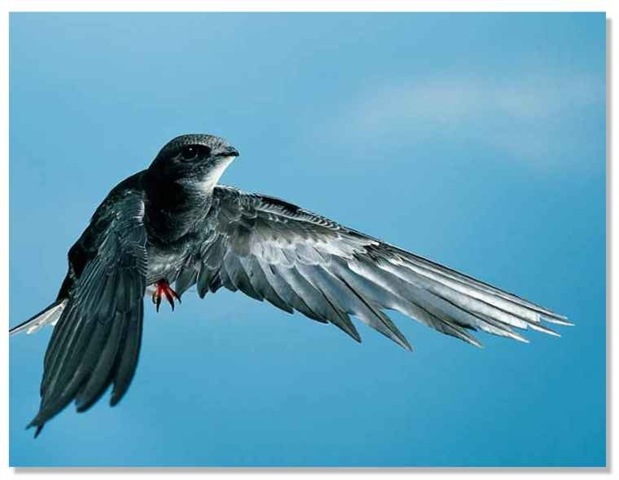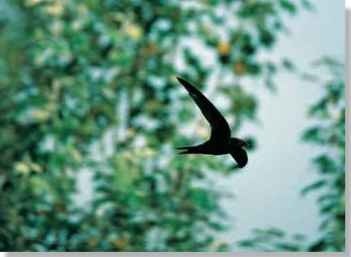ORDER
Apodiformes
FAMILY
Apodidae
GENUS & SPECIES
KEY FEATURES
• When not nesting, the swift spends all of its time in the air—it even mates while flying
• Feeds by trawling through swarms of insects
• Gathers in huge, screaming flocks when feeding and before migration
• Migrates, even sleeps on the wing at up to 6,000′
WHERE IN THE WORLD?
Breeds in Europe, North Africa and the Middle East to central Asia, extending as far east as northern China; migrates to Africa in winter

LIFECYCLE
Slim-bodied and long-winged, the Eurasian swift is the embodiment of aerial agility. Capable of any task in the air except nesting, it hunts, sleeps — even mates aloft.
HABITAT
The Eurasian swift’s home is the sky itself,and this adaptable bird may be seen over almost any habitat except dense woodland. It favors areas of human settlement, which offer ideal nesting sites. Most swifts nest under the eaves of houses, in church towers or on other high buildings. Lakes and gravel pits also attract large flocks of swifts because they provide ideal breeding conditions for the flying insects on which the birds feed.
The swift also uses cliff ledges and tree hollows to nest. Such sites are also ideal resting sites during the Eurasian swift’s long migrations to and from Africa, where it spends the winter.
Tree house
A tree hollow provides a snug nest site for chicks.
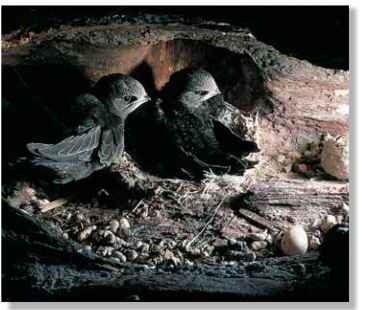
CONSERVATION
The Eurasian swift is hunted in its African winter quarters, but it has benefited greatly from human settlement. However, its numbers are difficult to census and its status is uncertain.
BEHAVIOR
BREEDING
The Eurasian swift nearly always pairs for life. At the breeding grounds, adult birds select a nest site, often one used before.They collect feathers, straw, grasses and leaves that have drifted into the air and glue these materials to the nest site with saliva.
Eggs are incubated by both parents and hatch after about three weeks. If the fledging period is prolonged by poor weather and food shortage, young swifts lapse into a sluggish, inactive state. However, a long fledging period actually works in the swift’s favor, since the young birds must be fully capable of feeding for themselves as soon as they fly from the nest.
LOVE IS IN THE AIR
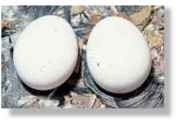
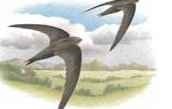
1 Choose a partner…
Swifts are unique in their ability to mate in flight. Courtship begins with the male chasing a female through the skies.
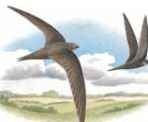
2 Returned affection…
The female’s first response to her pursuer is to raise her wings in a steep V, holding them almost vertically above her back.
Outside the breeding season, the swift lives on the wing. It sleeps at altitudes up to 6,000′, cruising slowly to conserve energy Indeed, the swift’s long wings suit it so well to life in the air that it never lands on the ground by choice. If accidentally grounded, a young swift has difficulty taking off again — if it can’t, it will starve.
Although agile, the swift is not notably fast. It flies at about 25 mph on migration and at 14 mph when feeding — slower than a sparrow. However; the swift’s habit of flocking among dense insect swarms makes feeding easy. On warm spring evenings and later when offspring have fledged, large, screaming flocks fly near the
colony. In poor weather, swifts may wheel over lakes, where they scoop up flying insects forced low by rain or cold.
Winged wonder What it lacks in speed, the swift makes up in agility.
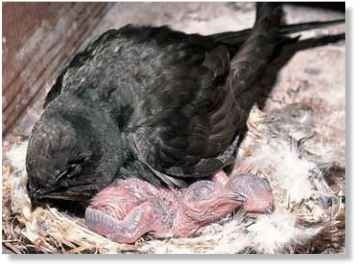
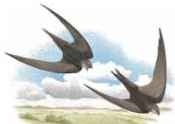
3 Closing in…
The female glides down, pursued by the male, who is drawing closer. She quivers her wings, then resumes normal flight.
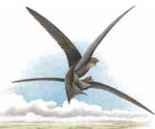
4 Contact
The male alights on the female’s back as they fall into a shallow glide. Both birds spread and twist their tail feathers as they mate.
FOOD & HUNTING
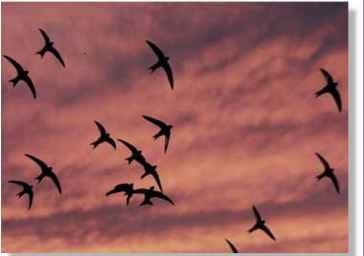
A Dusk flight Swifts flock to feed on dense insect swarms.
The swift feeds exclusively in the air, snapping up insects at low altitudes. Its wide gape (mouth) lets it catch several
insects at a time.Where great insect swarms gather, flocks of swifts slice through the swarm, consuming as many as they can.
When it has nestlings to feed, an adult gathers insects in its throat; these gradually accumulate into a tight food ball.There may be 200 to 1,000 insects (0.04-0.08 oz.) in one food ball.The adult flies to the nest and passes the food ball to a nestling and returns between 6 to 40 times each day to keep the entire brood fed.
The swift’s diet reflects the daily availability of prey locally. Flies are important in many habitats, as are flying ants, wasps, bees, beetles, bugs, butterflies, moths, flying aphids and spiders drifting on silken threads in the air In parts of Europe, for example, more than 500 invertebrate species have been recorded as prey for the swift.
One swift species was clocked in Asia at 199 mph, but this is now dismissed as inaccurate recording.
Some swift species use echolocation to find their way to nesting sites in caves.
The swift is host to a parasitic louse fly that drinks its blood. At about 0.3″ long, the fly is about 1/20th the bird’s size. This would be like having a shore crab on your body—and a bird may harbor 20 flies!
PROFILE
Eurasian Swift
The swift’s scythelike wings help it twist and turn after prey, and its wide gape forms an efficient scoop for flying insects.
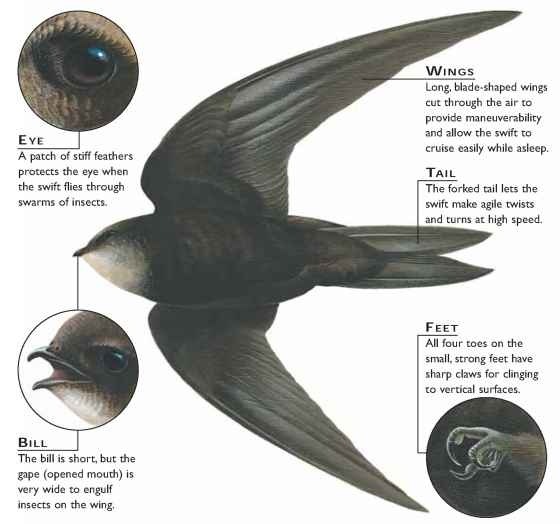
CREATURE COMPARISONS
Swifts are found throughout the world in temperate and tropical regions. Although broadly similar in appearance, the species differ considerably in size. They range from the tiny pygmy palm swift of South America, which barely reaches 4″ in length, to the brown spinetailed swift that measures more than 8″.
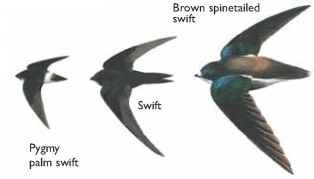
| STATISTICS | |
| Weight | 1.3-1.5 oz. |
| Length | 6-6.5″ |
| Wingspan | 16.5-19″ |
| Sexual Maturity | 1-2 years, but may not breed until 4 years old |
| Breeding Season | Late AprilffiHI through early August |
| Number of Eggs | 1-4; usually 2-3 |
| Incubation | Period | 19-27 days (usually 20) |
| Fledging Period | 5-8 weeks |
| Breeding ‘ Interval | Annual |
| Typical Diet | Wide variety of flying insects and spiders |
| Lifespan | Up to 21 years |
RELATED SPECIES
• Although they look like swallows and martins, I swifts aren’t related to them. The swift family Apodidae is placed in the order Apodiformes with four species of tree swift in the family I Hemiprocnidae and 330 or more hummingbirds in the family Trochilidae. The 82 species in the swift family are classified I, in three subfamilies: i Apodinae, Cypseloidinae and Chaeturinae.
